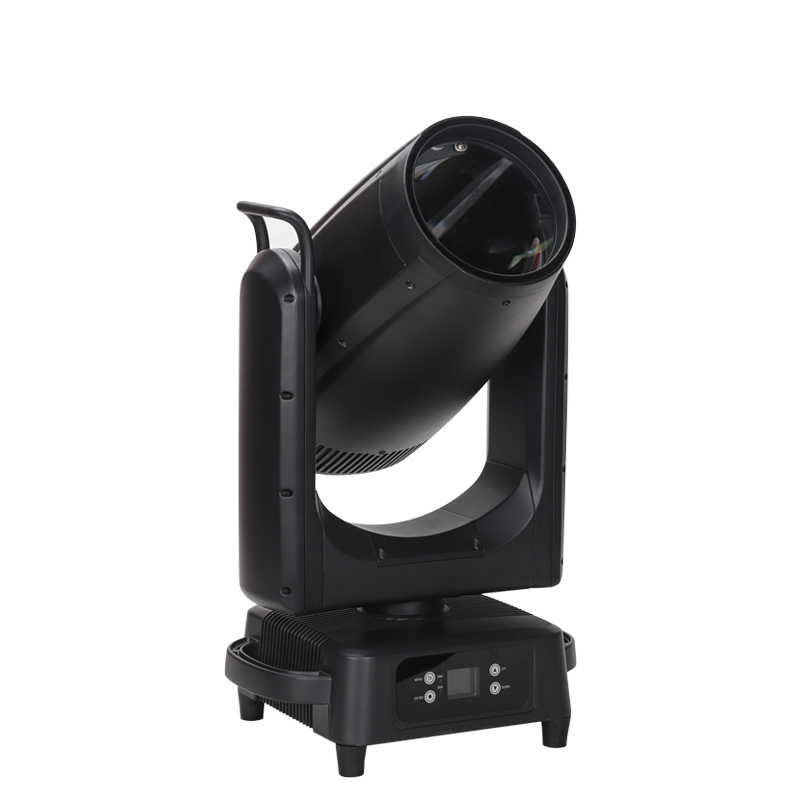1. Smart Integration: Lighting Meets the Internet of Things
In 2025, LED stage lighting has become deeply integrated with smart technologies. With DMX, Art-Net, and wireless protocols such as Wi-Fi and Bluetooth Low Energy, lighting technicians can control fixtures remotely with precise timing and automation. This smart integration allows adaptive lighting responses based on performance cues, environmental changes, or audience interaction.
Such flexibility is transforming how performances are conceived and executed, enabling dynamic, real-time adaptation that traditional systems could not provide.
_oX3HKj.jpg)
2. Sustainable Engineering: Energy Efficiency & Longevity
Today’s LED fixtures emphasize eco-friendly design without compromising power. Thanks to advances in LED chips and heat dissipation structures, energy usage has dropped by over 30% while lifespan increases beyond 50,000 hours. Stage production companies are increasingly replacing older discharge-based fixtures with high-efficiency LED solutions.
The 380W IP65 Waterproof Magnesium Alloy Beam Moving Head Light, for example, combines powerful output with environmental responsibility. Built with a lightweight magnesium alloy housing, it delivers intense beam effects while reducing overall power consumption and increasing corrosion resistance. Its waterproof rating ensures long-term outdoor usage without the need for frequent maintenance, making it a go-to choice for green touring setups.
3. Immersive Lighting Experiences: AR and Projection Mapping
Immersive lighting is more than a trend—it is reshaping audience expectations. With the support of AR projection and spatial mapping, LED fixtures can now cast digital imagery in real time, syncing perfectly with performers and stage props. These experiences transform live concerts and theatrical acts into multimedia spectacles.
LED systems with pixel-level control, wide-angle projection, and high refresh rates contribute to rich, vibrant lighting landscapes that evoke emotion and drive audience engagement.

4. Miniaturization and Modular Design
Another major leap in LED stage technology is the miniaturization of internal components. Compact moving head lights are now designed to deliver greater brightness while reducing overall fixture size. This facilitates installation in tight spaces and reduces transportation costs—especially crucial for touring artists.
The modular build of new-generation fixtures like the 380W Waterproof Beam Moving Head mentioned earlier enables fast maintenance, easy part swaps, and scalable system design, a game-changer for both rental houses and fixed venue operations.
5. Personalized Lighting Control and AI Integration
Artificial Intelligence is also making its mark. By integrating AI-assisted lighting controllers, technicians can program responsive lighting effects tailored to audience behavior or musical dynamics. Deep learning algorithms help generate optimized color palettes, fade curves, and timing sequences for every performance.
Fixtures with integrated sensors and wireless feedback loops—like the 380W IP65 Waterproof Magnesium Alloy Beam—are already compatible with next-gen control protocols. These allow not only control but two-way communication, pushing boundaries toward fully autonomous lightshows.

Conclusion
As the stage lighting industry embraces LED breakthroughs in smart control, eco-efficiency, immersive design, and AI-powered customization, products like the 380W IP65 Waterproof Magnesium Alloy Beam Moving Head Light exemplify the future. These innovations are no longer experimental—they are already redefining professional lighting across festivals, stadiums, corporate events, and live tours.
READ MORE:





Blue Sea Lighting is an enterprise with rich experience in the integration of industry and trade in stage lighting and stage special effects related equipment. Its products include moving head lights, par lights, wall washer lights, logo gobo projector lights, power distributor, stage effects such as electronic fireworks machines, snow machines, smoke bubble machines, and related accessories such as light clamps.
Quick Links
For more questions subscribe to our email








